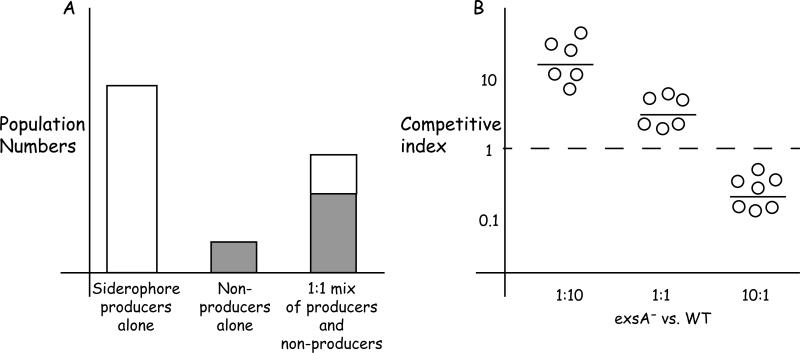Figure 3.
Laboratory experiments that reveal the hallmarks of cheating. A) Siderophore producing P. aeruginosa grow reasonably well in iron-depleted media by increasing iron uptake thanks to sideophore scavenging (Fig. 2). Non-siderophore producers (cheaters) grow poorly in the same environment when alone, but do better when mixed with producers by not paying the cost of siderophore production. The advantage of non-producers comes at the expense of the whole population [74]. B) The competitive advantage of cheaters decreases as their frequency increases because there are less cooperators to exploit in the population. This example is taken from a study of type III secretion systems in where P. aeruginosa where exsA− mutants lacking the type III system could cheat over wild-type bacteria (WT), but their measured competitive index decreased as cheater numbers increased in the population [53].

